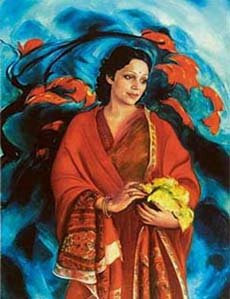An art collection can be a viable investment option
One may decide to collect works from a certain period, school or region. He may decide to focus on one aspect or may opt to diversify and collect representative works that cover more elements. As a result, most art collections are highly indicative of the buyer's choices. This is especially true in the case of collections built by individuals .
A corporate art collection or one owned by a museum is likely to have a different approach altogether, more so in the case of the latter. Incidentally, there are a few banks, who own some of the finest art collections in the world. For corporates, hotels and institutions it makes a lot of sense to collect art as it can grow into something significant with time and become a source of joy and pride.
When storage becomes a problem most people prefer to build a separate space to display the works. And, it can be seen that when most individual collections evolve to an extent they may requires a s u b s t a n - tial amount of space and effort to house and display them. Very often, these spaces are then opened to public for viewing. In India, a large number of art collections are privatelyowned and many of them have been converted later on into museums that allow public access.
When collecting art, it is important to periodically review the artworks and see if some of them need to be sold off to either make space for new works or in order to build a more coherent compilation.

